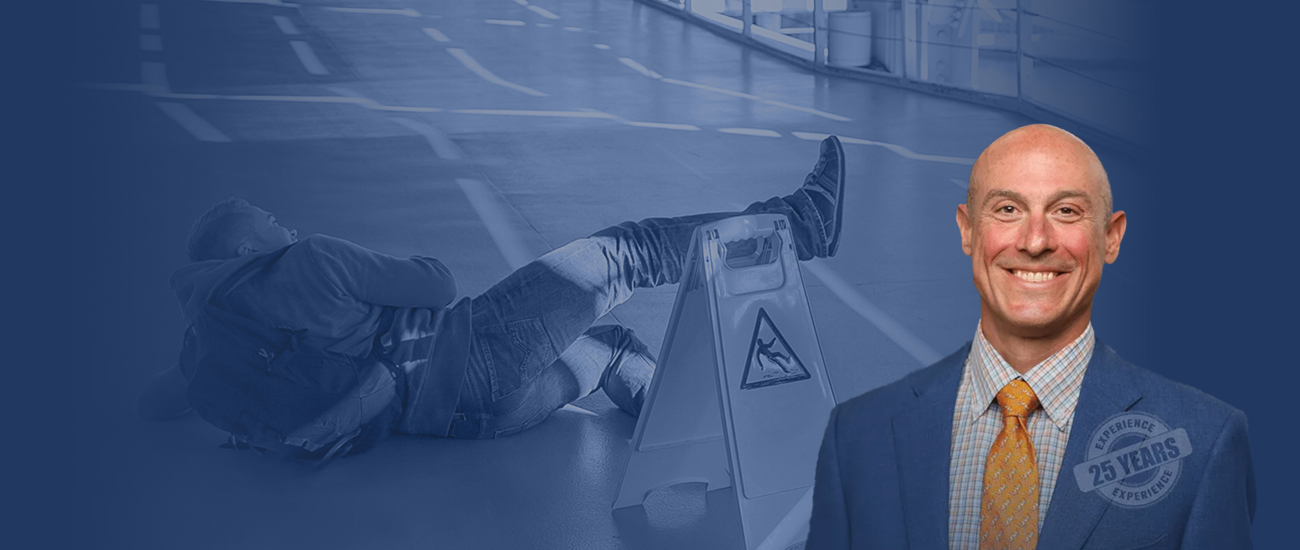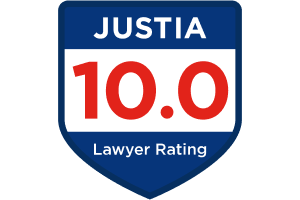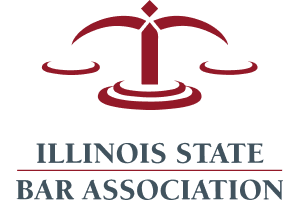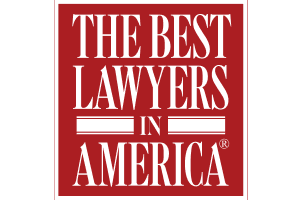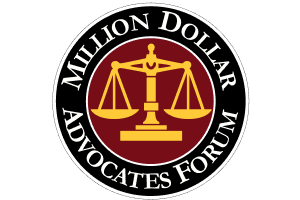Evidence in Slip and Fall Cases
Our experienced personal injury lawyers play a crucial role in gathering evidence in slip and fall cases. Whether you fell on ice in Millennium Park or were hurt in a Wrigleyville brownstone, we can review all details of your personal injury lawsuit and ensure that you have a convincing argument. Contact us today for a free consultation about how to win a slip and fall accident case.
What Kind of Evidence Is Needed to Support a Slip and Fall Case?
You can increase settlement amounts in slip-and-fall cases by preserving evidence and presenting it convincingly. Showing how the accident occurred, how badly you were hurt, and what financial losses you suffered will support your slip-and-fall claim and ensure you receive fair compensation.
Evidence Needed to Prove Liability
Illinois uses modified comparative negligence to determine liability (735 ILCS 5/2-1116). This means that everyone involved in the slip-and-fall case is assigned a percentage of blame, and you cannot file a personal injury lawsuit if you were more than 50% responsible.
Proving negligence involves showing that the property owner knew that a dangerous condition existed but failed to act in a timely manner. You also must demonstrate that, because the property owner failed to fix the problem, they should face legal consequences for the injuries suffered by you or your loved one.
Liability is not essential for a workers’ compensation claim, as you can receive compensation for lost wages and medical expenses even if someone else’s negligence did not cause the accident.

Photographs, Videos, and Security Camera Footage of the Hazardous Condition
Photos of the accident scene can reveal hazardous conditions, such as a wet floor, poor lighting, uneven surfaces, or debris.
Security camera footage is a powerful form of evidence, especially if it captured the slip-and-fall accident. Your personal injury attorney can subpoena the property owner to secure surveillance footage or may talk to neighbors to see if they have any security cameras pointed toward where the fall occurred.
You can also use photographs and videos of the property before the accident occurred to demonstrate that the hazard existed before you were hurt.
Incident Reports and Business Records
You should always file a slip-and-fall incident report, especially if the accident occurred on commercial property like a Pilsen bar. This will help us determine when the accident occurred, allowing us to search through security footage for timestamps, and it will also indicate whether the business owner failed to address the issue after becoming aware of it.
We’ll also look at the business’s records to see if there were any previous complaints about property conditions, if they have performed any repairs, and if they work with any maintenance companies who may also be liable for the accident.
Maintenance Logs and Cleaning Schedules
If an accident occurs on a business or government property, we can secure evidence demonstrating that the property owner failed to maintain their premises in a clean and orderly condition. For example, if you fell on an oil spill in a casino garage, we can use maintenance logs to prove that someone should have noticed the problem and remedied it before you were hurt.
Witness Statements and Testimony
Witness statements can be crucial when proving negligence. They can explain how the accident happened and whether there were mitigating factors like a wet floor. After an accident, always get contact information from anyone who was present, such as employees, fellow shoppers, or other guests.
Your slip and fall attorney will gather witness accounts through depositions, which are recorded interviews, or interrogatories, which are written answers to questions. You must allow an attorney to collect this, as questions must be phrased in a particular way to avoid leading witnesses.
Prior Complaints or Code Violations
If there were previous accident reports, we can use this to demonstrate that the property owner or manager acted negligently by failing to remedy issues. Building inspectors can also attest to the technical details of the building’s condition. These professionals will compare the property to the Chicago Building Code, Title 14B, and identify any insufficiencies.
Weather and Lighting Conditions
If you had an accident on someone else’s property, weather and lighting conditions may prove or disprove liability. For example, Murphy-Hylton v. Lieberman Management Services determined that property owners can be liable for a slip and fall incident on icy surfaces in some circumstances.
Typically, owners are not held liable for injuries sustained on icy sidewalks due to the Illinois Snow and Ice Removal Act (745 ILCS 75/2), but they can be if the property owner’s negligence caused unnatural ice accumulation.
While gathering evidence, your slip and fall attorney will review the accident scene, including what outdoor lighting and dangerous weather conditions could have contributed to the fall.
Evidence Needed to Prove Slip and Fall Injuries
Medical Records of Emergency Room and Hospital Visits
Medical documentation is crucial in personal injury cases, particularly evidence collected immediately after the accident. Whether this was a workplace injury or an accident while visiting a store, always seek medical attention as soon as possible.
Your slip and fall lawyer can then request these medical records from the hospital, such as UChicago Medicine, and demonstrate that your injuries resulted from the fall. We’ll also tabulate medical expenses in slip and fall accident casesso that you receive a fair settlement that covers all your needs.
Imaging Reports (X-rays, MRIs, CT Scans)
These medical records will objectively confirm fall injuries like fractures, head trauma, or soft tissue damage. Always get all tests ordered by your doctor, as these provide a full picture of your injuries and what types of treatments you may require.
Medical Expert Testimony
Expert testimony from medical professionals can significantly bolster a slip-and-fall case. Doctors, physical therapists, and other professionals will explain how your injuries occurred based on similar cases they have attended, and they can also discuss what treatments you would need to regain function.
Photographic Evidence of the Injuries
Visual proof of the injuries suffered in a fall accident can show insurance companies that you have suffered significant damage. Get pictures of any injuries as soon as possible after the accident, as this will show the progression of your healing.
Continuity of Care Documentation
If you do not continue to receive treatment, insurance companies can argue that you were not as seriously injured as you claim. As such, always follow your doctor’s instructions after a slip-and-fall accident, including any treatments they suggest could improve your quality of life.
Evidence Needed to Prove Economic Damages
Medical Bills and Receipts
Hospital stays, surgeries, physical therapy, vocational therapy, prescriptions, and mental health treatment can all be included in your medical bills. Throughout your treatment, keep track of your health insurance bills or out-of-pocket spending.
Pay Stubs and Employment Records to Prove Lost Income
Lost wages in slip and fall accident cases are crucial for both personal injury lawsuits and workers’ compensation claims.
These will be calculated based on how much money you could have made if you were not injured. Previous pay stubs and employment records show what you typically earn in a given month, and we will then multiply this by your time off work.
Tax Returns or Financial Statements
Some injury victims are not able to return to their previous employment or must reduce their hours because of disability. In this case, we will calculate future lost income based on your previous earnings. If you are a salaried or wage employee, we can use W-2s to show what you typically make in a year, then consult with experts to understand how your earning potential was reduced by the accident.
Self-employed workers, freelancers, and gig workers can use 1099s and financial statements to demonstrate their typical annual earnings. As these sources of income may be more inconsistent, we can assess your hourly wage and then estimate how much your earning potential has been reduced.
Invoices for Out-of-Pocket Costs
Slip-and-fall injuries often result in other expenses, such as transportation costs, childcare, housekeeping, assistive devices, and home modifications. Gathering evidence of your other expenses can show the overall impact on your life and add to your damages.
While you are recuperating, keep all invoices and receipts for any purchases relevant to your injuries. Your attorney can review these expenses, decide which ones are most pertinent, and incorporate them into a demand letter.
Vocational or Life Care Expert Reports
Disability in slip and fall accident cases can be assessed through expert testimony from vocational therapists and medical professionals. Through these expert witness statements, we can identify what costs you may have related to vocational retraining or long-term care.
Evidence Needed to Prove Non-Economic Damages
When collecting evidence, we must also consider non-economic damages, which cover more intangible losses from a slip-and-fall accident. We can use a slip and fall case settlement calculator to calculate these costs in relation to your hard financial expenses, such as multiplying your costs by a damage multiplier.
Pain Journals and Daily Logs
Pain and suffering in slip and fall accident cases are often a core component of damages, as victims usually suffer significant pain and discomfort while healing. Keeping track of your pain can be a valuable way to objectively document these damages.
You can use an app or paper journal to keep track of your pain on a scale from 1-10. Discuss any limitations you have, such as being unable to walk downstairs or getting fatigued after short periods of activity.
Be as factual as possible and include concrete details. For example, if you have a dull, aching pain, this is different than a sharp, stabbing pain. You should also explain what challenges you are facing and how often they occur, like not being able to stand up for more than 15 minutes.
Mental Health Treatment Records
Any accident can cause depression, anxiety, and trauma. After a fall accident, victims may be afraid to fall again or develop a phobia of heights. They may relive the event in nightmares or avoid certain places.
If you have sought mental health treatment from a therapist, our personal injury attorneys can subpoena their records to understand what symptoms you have suffered. We will also speak to your social worker or therapist and may ask them to testify on your behalf.
Testimony from Family or Caregivers
Your loved ones can provide vital evidence about the physical, emotional, and social changes you have suffered after the fall. For example, they may attest that you aren’t able to indulge in your favorite hobbies, struggle to care for your children, or are having difficulty at work.
For severe injuries that result in significant impairment, professional caregivers can explain what challenges you face on a daily basis, like difficulty with personal hygiene or an inability to work.
Photographs or Videos Showing Life Before and After the Fall
Photo and video evidence of your life before and after the accident occurred can support your non-economic damages by showing that the injuries sustained in the fall accident have significantly changed your life.
Relevant evidence can include side-by-side comparisons of photos before and after, as well as videos of you struggling to perform everyday activities. The purpose of this evidence is to demonstrate changes in mobility, social engagement, and overall well-being.
Medical Opinions on Loss of Normal Life
Doctors, nurses, physical therapists, and mental health professionals can offer their professional opinions about the physical limitations and emotional suffering that result from the accident. These will be calculated according to the court system’s damages rules, including shortened life expectancy (30.04.05) or pain and suffering (30.05).
Your Attorney’s Role in Gathering Evidence
Working with the best attorney available is key to getting a fair slip-and-fall accident settlement. With over 100 years of combined legal experience, we are highly familiar with what kinds of evidence will best support your claim and will aggressively negotiate with insurance companies to receive fair compensation.
Our role in collecting and preserving evidence encompasses the following tasks.
Subpoenas: We can subpoena businesses and individuals for incident reports, medical records, surveillance footage, maintenance records, and private communications. If the other party fails to provide this information, we can request it through court motions.
Evidence Preservation: After an accident, the building’s owner may attempt to repair the problem and insist that the defect never existed. Building records and medical evidence may also go missing as individuals try to conceal their actions. We can issue motions to preserve evidence, ensuring that we obtain a complete picture of what happened.
Witness Statements: Taking sworn statements is a key part of the legal process. These must be properly recorded or they will not be admissible in court. We can interview friends, family, property owners, and eyewitnesses to gain their perspectives.
Building Records and Accident Reports: Accidents on commercial properties, such as museums or stores, involve demonstrating how building defects or inadequate maintenance contributed to the accident. Common evidence may include property inspections, insurance claims, cleaning records, and private communications regarding issues. Our goal is to demonstrate that the property owner was aware of the problem and failed to take any action.
Expert Witnesses: Doctors, building inspectors, engineers, physical therapists, and other professionals can help show how the property owner’s negligence contributed to your accident and that the injuries you suffered are consistent with your version of events.
Simply gathering evidence is not enough to prove liability; we also need to create a compelling and factual narrative that combines the hard evidence with your personal narrative and overall experience. This requires a skilled personal injury lawyer who is familiar with both the local legal process and what insurance companies need to approve a claim.
After collecting and preserving all evidence, we will write a demand letter and a legal complaint that explains what happened, what evidence supports your argument, and what we expect based on your monetary and non-monetary losses.
With over 25 years of experience and 5,000 successful cases, Slip & Fall Injury Lawyers have the intensive training necessary to present all evidence convincingly.
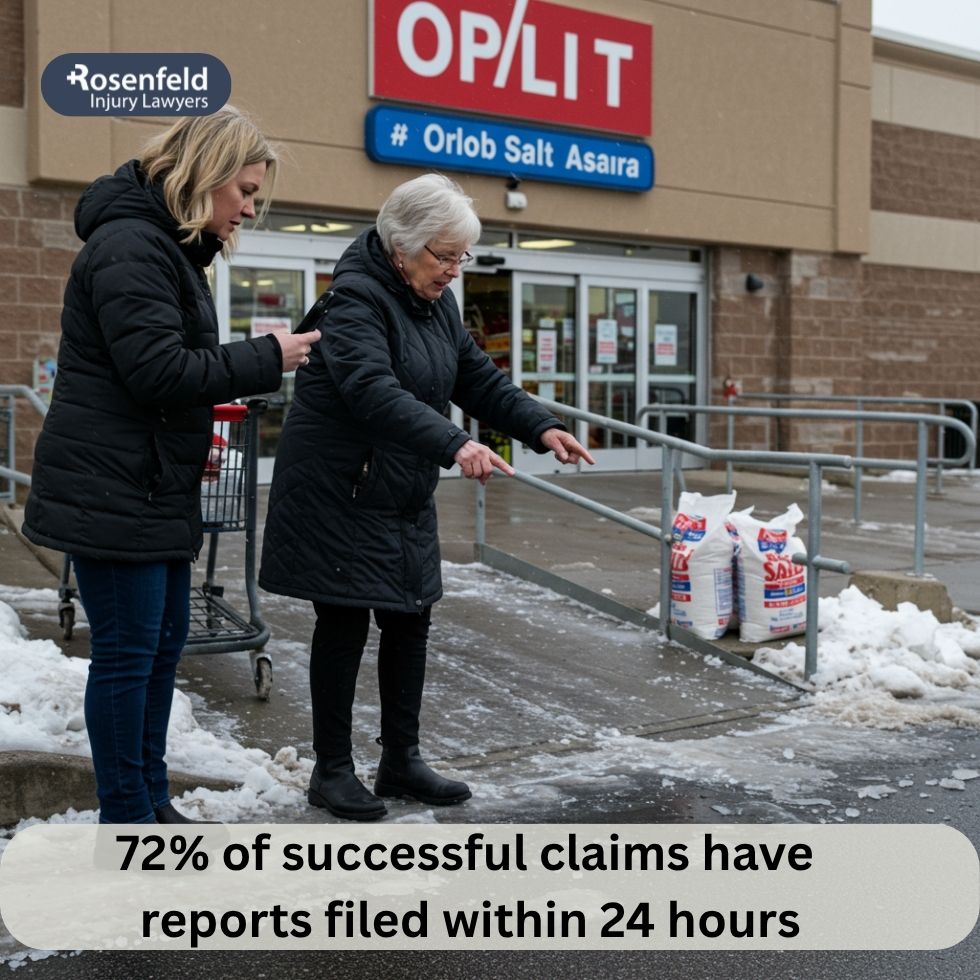
Fair Compensation Following a Slip and Fall Due to a Property Owner’s Negligence
Slip & Fall Injury Lawyers is the best personal injury law firm in the Chicagoland area due to our 98% success rate, Super Lawyers rating, and fierce advocacy. Whether you’ve suffered a workplace injury or a fall on private property, our team is here to help. We work on a contingency fee basis, meaning you owe us nothing unless you win. Contact us today for a free consultation about your legal options.

